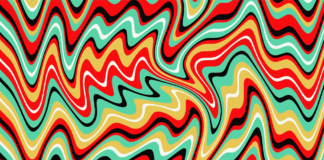Parallax is a fundamental concept that plays a crucial role in various fields, from astronomy to web design. It refers to the apparent shift or difference in the position of an object when viewed from two different vantage points. This phenomenon occurs due to the relative motion between the observer and the object being observed, leading to a change in the angle or perspective from which the object is seen. In this comprehensive guide, we will explore ten important aspects of Parallax across various domains.
Astronomical Parallax: Parallax is widely used in astronomy to measure the distances to nearby stars. This method, known as stellar parallax, relies on observing a star’s apparent shift in position as the Earth orbits the Sun. By precisely measuring this shift, astronomers can calculate the distance to the star, providing essential information about the size and scale of the universe.
Website Design: Parallax scrolling is a popular web design technique that creates an immersive and interactive user experience. It involves background images moving at a slower rate than foreground images, creating a sense of depth and dimension as users scroll down a webpage. This adds an engaging visual element to websites, making them more dynamic and appealing.
Visual Depth Perception: In the realm of human perception, parallax is a vital cue for depth perception. Our eyes are slightly apart, allowing each eye to view an object from a slightly different angle. The brain combines these two views to create a three-dimensional perception of the world, enabling us to judge distances and spatial relationships accurately.
Video Games and 3D Graphics: Parallax mapping is a technique used in computer graphics to simulate depth and relief on flat surfaces. By applying textures with varying levels of parallax, the illusion of depth and three-dimensionality is created, enhancing the realism of video game environments and 3D graphics.
Earth’s Rotation: Diurnal parallax is a phenomenon caused by the Earth’s rotation. As observers on Earth move from day to night, they experience a slight shift in the apparent position of celestial objects like the Moon and stars. This effect is used in navigation and astronomy to calculate the Earth’s rotation and the observer’s latitude.
Photography and Stereoscopic Imaging: Parallax is the principle behind stereoscopic or 3D photography. By capturing two slightly offset images and presenting them separately to each eye, stereoscopic viewers create the illusion of depth, making images appear three-dimensional.
Parallax Error in Instruments: Parallax can introduce errors in measurements, especially when reading analog instruments like thermometers and barometers. To avoid parallax errors, observers must view the scale from a specific angle to ensure accuracy.
Galactic Parallax: In astrophysics, galactic parallax is a technique used to measure the distance to objects within our Milky Way galaxy. By observing the apparent shift in position of objects when viewed from different parts of Earth’s orbit, astronomers can estimate the distances to nearby celestial objects, such as star clusters and pulsars.
Historical Significance: The concept of parallax has a rich historical significance. Ancient Greek astronomers like Hipparchus used parallax to estimate the distances to the Moon and the Sun. This early work laid the foundation for modern astronomical measurement techniques.
Parallax in Art: Parallax is sometimes used in artistic compositions to create dynamic and perspective-altering effects. Artists may manipulate parallax to distort or enhance the viewer’s perception of a two-dimensional artwork, adding layers of depth and intrigue.
Parallax is a multifaceted concept with applications spanning various scientific, artistic, and technological domains. From its role in measuring astronomical distances to its impact on web design and visual perception, understanding parallax is essential in a wide range of disciplines, making it a fundamental concept in our modern world.
Parallax, as discussed in the previous points, is a versatile concept that pervades many aspects of our lives. One of its critical applications is in the realm of geodetics and cartography. Geodetic Parallax is employed in mapping and surveying, where the Earth’s curvature can lead to parallax effects in measuring heights or distances. This understanding of parallax is essential in creating accurate topographic maps, determining elevation changes, and ensuring precision in construction and infrastructure projects.
Moreover, the notion of parallax extends into the realm of human physiology. The Binocular Parallax or disparity is the slight difference in the images captured by each eye due to their spatial separation. This binocular disparity is a fundamental component of stereopsis, which allows us to perceive depth in our surroundings. It is thanks to binocular parallax that we can judge distances accurately, catch a ball, or safely navigate through a crowded space.
In the world of filmmaking and photography, parallax is a vital consideration for creating visually engaging content. Parallax in Cinematography involves using camera movement to create depth and perspective in a scene. By strategically adjusting the camera’s position relative to the subject, filmmakers can achieve dynamic shots that draw the viewer’s attention and convey a sense of space and motion.
In the context of navigation, Parallax in GPS (Global Positioning System) plays a significant role. GPS relies on a constellation of satellites orbiting the Earth, and receivers on the ground calculate their positions based on the time it takes for signals from these satellites to reach them. However, the precise measurement of time is essential, and any discrepancies can lead to errors in determining location. The theory of relativity, which incorporates the concept of parallax, is crucial in ensuring the accuracy of GPS.
Parallax also finds its place in the world of architecture and urban planning. Architectural Parallax refers to the consideration of how a building or structure appears from different angles and distances. Architects use this understanding to design structures that are visually appealing and harmonious within their surroundings.
The concept of parallax can also be applied to the field of marketing and advertising. Parallax in Marketing refers to the use of different perspectives or angles to convey a message or tell a story. In advertising, this technique is often used in promotional videos, product photography, and website design to capture the audience’s attention and create an engaging narrative.
Parallax even extends its influence to the world of finance and investments. Parallax Error in Finance occurs when there is a difference in the way an asset or financial instrument is valued based on different perspectives or sources of information. Investors and financial analysts need to account for this potential error to make informed decisions in a complex and dynamic market.
Lastly, it’s worth noting that parallax is not only a phenomenon but also a concept that has inspired philosophical and metaphysical discussions. Philosophers and thinkers have contemplated the idea of parallax as a metaphor for how different perspectives can shape our understanding of reality. This concept is often used to explore the relativity of truth and the subjective nature of perception.
In summary, parallax is a pervasive and versatile concept that transcends various fields and disciplines. Its applications range from the measurement of celestial distances in astronomy to the creation of immersive web experiences in design, and from the perception of depth in human vision to the precision of GPS in navigation. Understanding parallax is not only fundamental in these practical applications but also enriches our philosophical and artistic explorations of the world around us.














